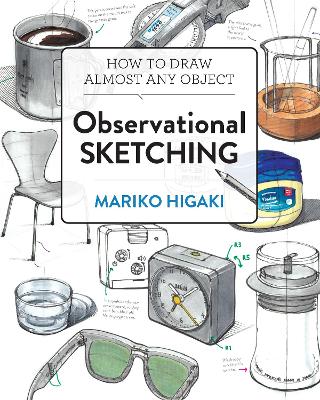Reviewed by annieb123 on
Observational Sketching: How to Draw Almost Any Object is a tutorial art & technique guide by Mariko Higaki. Originally released in Japanese in 2019, this English translation from Quarto on their Rockport imprint is due out 7th Jan 2020. It's 128 pages and will be available in paperback format.
The style is technical, almost isometric (see cover). The author includes a number of short essays from other technical artists and engineers on various aspects of observational sketching such as product design and packaging design. I found the design process very interesting and enlightening. These include a Q&A format on the artistic process, the artists development and careers, and other information about how to actually get what one sees onto the paper in a recognizable form.
The chapters are arranged thematically: What observational sketching is (and what's the appeal), basic tutorials and techniques which anyone can use right away, how to observe and render different surfaces (such as metals, plastics, etc), and the step by step specific tutorials.
I find the style very appealing (then again, I'm an engineer and pretty much anything I need to draw on a daily basis -needs- to be pared down and technical). I found a number of really good tips for rendering drawings which actually look like what I'm aiming for.
Lots of worthwhile tutorial information here.
Four stars.
Disclosure: I received an ARC at no cost from the author/publisher for review purposes.
Reading updates
- Started reading
- Finished reading
- 23 December, 2019: Reviewed
